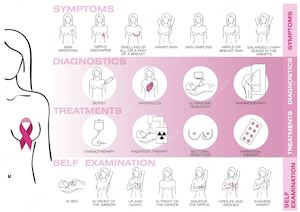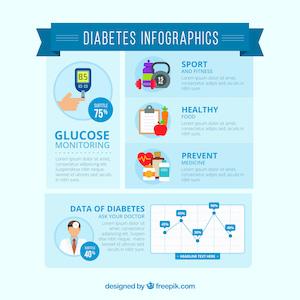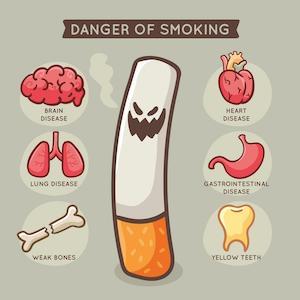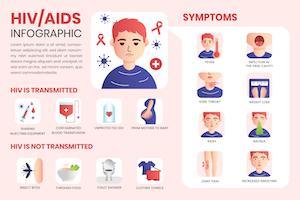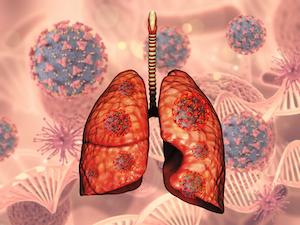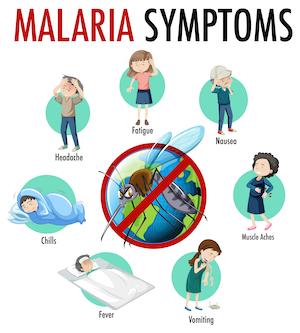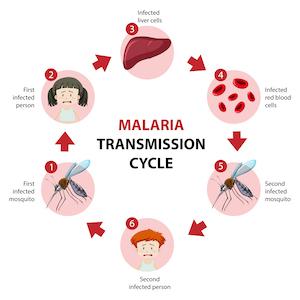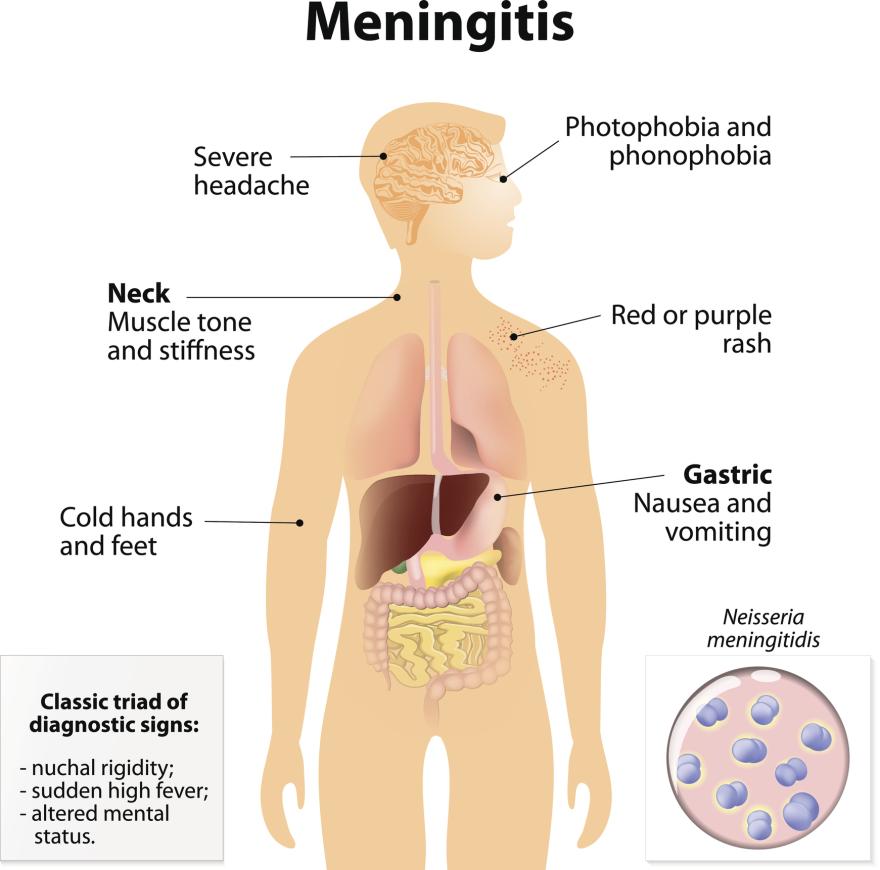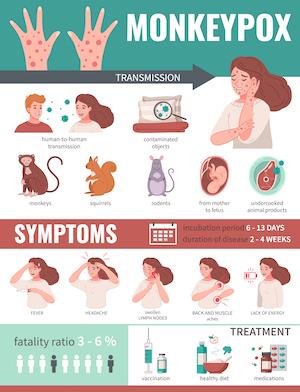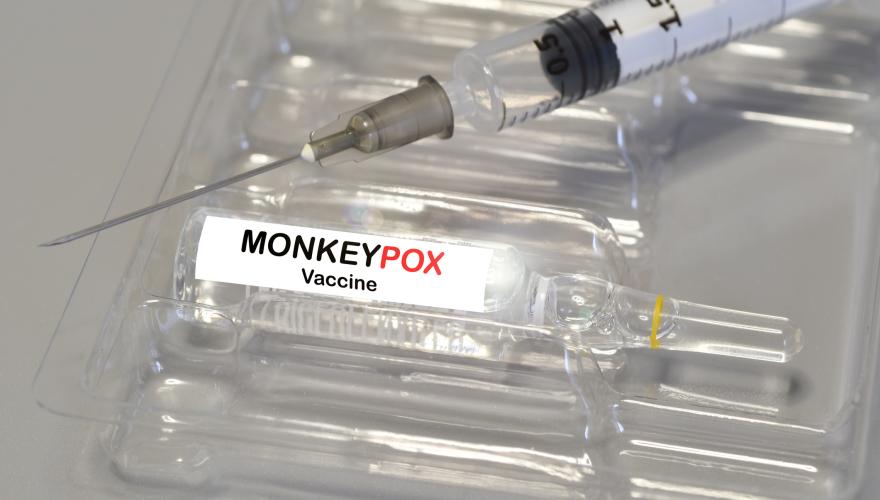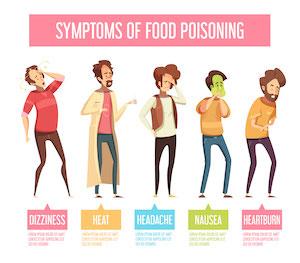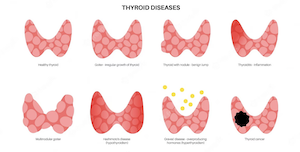Take Care NJCU
Take Care NJCU
Don't miss out on this crucial opportunity to protect yourself and thrive! Let's ensure your health and success with these essential vaccines!
Public Health Solutions - Fort Greene
295 Flatbush Ave, Ext 3rd floor, Brooklyn, NY 11201
Immunization Clinic Appointments: 347-396-7943
HWC FREE Resources

TimelyCare
How to Access Free, 24/7 Virtual Care from Anywhere.
It’s simple! Follow these steps and you’ll be connected to virtual health and well-being services in no time.
- Download the TimelyCare mobile app or visit //timelycare.com/njcu
- Log in with your school email address.
Use the one that ends in .edu. - Fill out some information. Nothing too complicated!
TimelyCare is confidential, secure, and HIPAA compliant. - Click “Get Care.”
Well, you get it. - Don’t need a visit right away? Check out our Self-Care tab.
It’s self-care at your fingertips.
Having trouble logging in? Call 1-833-4-TIMELY for assistance. We’ve got you covered!
Prevention Initiatives
What Are the Symptoms?
There are different symptoms of breast cancer, and some people have no symptoms at all. Symptoms can include:
Any change in the size or the shape of the breast.
Pain in any area of the breast.
Nipple discharge other than breast milk (including blood).
A new lump in the breast or underarm.
See your doctor immediately if you have any signs that worry you.
What Are the Risk Factors?
Some main factors that affect your chance of getting breast cancer include the following
Being a Woman.
Being older. Most breast cancers are found in women 50 years old or older.
Having changes in your BRCA1 or BRCA2 genes.
How to reduce your risk?
Healthy habits are the first step in preventing breast cancer.
Keep a healthy weight. A healthful diet may lower your risk of developing some cancers, diabetes, heart disease, and stroke. Please review our university's Nutrition & Workout plans.
Be active physically
Breast-feed
For more information, please visit lower your breast cancer risk.
What else can I do?
Consult your doctor if you detect changes in your breasts, such as a new lump or skin changes. Ask your physician when to start mammography as well.
Sources:
Mayo Foundation for Medical Education and Research. (2021, September 17). Breast cancer: How to reduce your risk. Mayo Clinic. Retrieved October 7, 2022, from https://www.mayoclinic.org/healthy-lifestyle/womens-health/in-depth/breast-cancer-prevention/art-20044676
Centers for Disease Control and Prevention. (2022, September 26). What can I do to reduce my risk of breast cancer? Centers for Disease Control and Prevention. Retrieved October 7, 2022, from https://www.cdc.gov/cancer/breast/basic_info/prevention.htm
Breast Cancer Awareness month 2022. National Breast Cancer Foundation. (2022, October 4). Retrieved October 7, 2022, from https://www.nationalbreastcancer.org/breast-cancer-awareness-month/
Common Symptoms of a Vitamin D deficiency
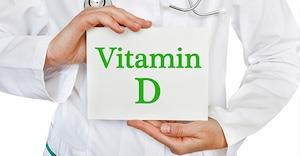
A deficiency in vitamin D can lead to various symptoms, as it plays a crucial role in several bodily functions. Some common symptoms of vitamin D deficiency include:
Fatigue: Feeling tired and lacking energy can be a sign of low vitamin D levels.
Bone and Muscle Pain: Vitamin D is essential for maintaining bone health and muscle function. Deficiency can lead to bone pain, muscle weakness, and increased risk of fractures.
Bone Loss: Severe vitamin D deficiency can result in osteoporosis, weakened bones, and increased fracture susceptibility.
Depression: Low levels of vitamin D have been linked to an increased risk of depression and mood disorders.
Impaired Wound Healing: Vitamin D plays a role in supporting the immune system and promoting wound healing. Deficiency may impair the body's ability to heal wounds effectively.
Hair Loss: Some studies suggest a link between vitamin D deficiency and hair loss, though more research is needed to confirm this association.
Frequent Illness: A weakened immune system due to low vitamin D levels may increase susceptibility to infections and illnesses.
Difficulty Sleeping: Some individuals with vitamin D deficiency may experience difficulty falling asleep or staying asleep.
Reduced Cognitive Function: There is some evidence to suggest that low vitamin D levels may be associated with cognitive impairment and an increased risk of dementia.
It is important to note that these symptoms can vary in severity and may not necessarily indicate a vitamin D deficiency alone. If you are experiencing any of these symptoms, it is advisable to consult with a healthcare professional for proper evaluation and treatment. Additionally, it is essential to address any potential underlying causes of the deficiency and to follow medical advice regarding supplementation and lifestyle changes.
DID YOU GET YOUR VITAMIN TODAY?
Remember that addressing vitamin D deficiency is an important step towards optimizing your overall health and well-being. Please contact your doctor today.
Sneak Peek Into the Lifestyle Change Program
If you're at risk of developing type 2 diabetes, please see and follow the simple recommended steps.
- Take the Risk Test https://diabetes.org/diabetes/risk-test
- A1C Test https://diabetes.org/diabetes/a1c Ask your doctor to decide if this important test is right for you or not.
- Calculate Your BMI https://diabetes.org/tools-support/tools-know-your-risk/bmi-calculator Knowing your BMI is a great first step on your lifestyle change journey.
- Lifestyle Change Programs
The National Diabetes Prevention Program (National DPP) is one of the programs that was developed by the Centers for Disease Control and Prevention (CDC) to implement a structured, research-based program for changing one's lifestyle—which has been shown to help prevent and delay the onset of type 2 diabetes https://www.cdc.gov/diabetes/prevention/about.htm Participating in a CDC-recognized lifestyle change program can cut your risk of type 2 diabetes in half. - The Personal Success Tools (PST)
PST is a user-friendly interactive web tool that National DPP lifestyle coaches can utilize to boost participant retention. Assist individuals with prediabetes or those at risk for type 2 diabetes to complete the entire year of the lifestyle change program. https://www.cdc.gov/diabetes/prevention/resources/personal-success-tool-pst.html
For more information, please check
- Centers for Disease Control and Prevention. (2021, August 27). National Diabetes Prevention Program. Centers for Disease Control and Prevention. Retrieved October 31, 2022, from https://www.cdc.gov/diabetes/prevention/index.html
- Tools to know your risk. Know Your Risk | ADA. (n.d.). Retrieved October 31, 2022, from https://diabetes.org/tools-support/tools-know-your-risk
Staying hydrated is a fundamental aspect of maintaining good health and well-being. Water is a vital component of our bodies, accounting for approximately 60% of our body weight. It is crucial in physiological processes, including temperature regulation, joint lubrication, nutrient transportation, and waste elimination. Despite its importance, many people need to prioritize adequate hydration. This essay explores the benefits of staying hydrated, the signs of dehydration, and practical tips to ensure sufficient water intake.
Benefits of Staying Hydrated
Enhanced Physical Performance:
Staying hydrated is essential for optimal physical performance. During exercise or any strenuous activity, the body loses water through sweat. If this water is not replenished, it can lead to dehydration, adversely affecting strength, endurance, and overall performance. Proper hydration helps maintain blood volume, supports muscle function, and prevents fatigue.
Cognitive Function and Mood:
Hydration is crucial for brain health. Even mild dehydration can impair cognitive function, including concentration, alertness, and short-term memory. Studies have shown that dehydration can also negatively impact mood, leading to increased feelings of anxiety and irritability. Drinking enough water ensures the brain remains well-hydrated, promoting mental clarity and emotional stability.
Digestive Health:
Water aids in digestion and helps prevent constipation. It is necessary for the breakdown of food and the absorption of nutrients. Adequate hydration keeps the digestive tract functioning smoothly and can prevent digestive discomforts such as bloating and indigestion.
Detoxification and Kidney Health:
Water is essential for the body’s detoxification processes. It helps flush out toxins and waste products through urine. Staying well-hydrated supports kidney function and reduces the risk of developing kidney stones and urinary tract infections.
Skin Health:
Hydration plays a significant role in maintaining healthy skin. Well-hydrated skin appears more radiant, elastic, and youthful. Water helps to keep the skin moisturized from within and can reduce the occurrence of dryness and wrinkles.
Signs of Dehydration
Recognizing the signs of dehydration is crucial to taking timely action. Common symptoms include:
- Thirst: Feeling thirsty is an obvious sign that the body needs water.
- Dry Mouth and Skin: Dehydration can cause dryness in the mouth and skin.
- Dark-Colored Urine: Urine that is darker than usual can indicate dehydration.
- Fatigue: Lack of water can lead to feelings of tiredness and lethargy.
- Dizziness and Confusion: Severe dehydration can affect cognitive function and cause dizziness or confusion.
Practical Tips for Staying Hydrated
Drink Plenty of Water:
One of the most straightforward ways to ensure you're staying hydrated is to follow the '8x8' rule. This means aiming to drink at least eight 8-ounce glasses of water daily. However, it's important to note that individual water needs can vary based on factors such as age, weight, activity level, and climate.
Eat Water-Rich Foods:
Drinking water isn't the only way to stay hydrated. You can also incorporate fruits and vegetables with high water content into your diet. Cucumbers, watermelons, oranges, and strawberries are excellent choices that can help you stay hydrated while also providing essential nutrients.
Carry a Water Bottle:
Keep a reusable water bottle with you throughout the day. This will remind you to drink water regularly.
Set Reminders:
Use smartphone apps or set alarms to remind yourself to drink water regularly.
Monitor Your Urine:
Take charge of your hydration by paying attention to the color of your urine. Light yellow urine indicates proper hydration, while dark yellow or amber can signify dehydration. By monitoring your urine, you can ensure you're staying properly hydrated.
Drink Water Before, During, and After Exercise:
Drink water before starting any physical activity, stay hydrated during exercise, and replenish lost fluids afterward.
Staying hydrated is crucial for maintaining overall health and well-being. It's not just about quenching your thirst but nurturing your body and mind. By recognizing the signs of dehydration and adopting practical strategies to ensure adequate water intake, you can significantly improve your quality of life. So, keep yourself hydrated and enjoy the myriad benefits that come with it.
In the US, smoking is responsible for 30% of all cancer deaths and 20% of all cancer cases.
About 80% of lung cancer cases and 80% of lung cancer fatalities are brought on by smoking. The most common type of cancer that results in mortality in the US is lung cancer.
Lung cancer is one of the deadliest cancers, with only a 4% survival rate, and is directly related to smoking.
Smoking harms your lungs' tiny air sacs and airways. As soon as a person starts smoking, harm is done, and lung function deteriorates over time. However, it could take some time before the issue is obvious enough to identify Lung illness.
Severe long-term lung disorders such as chronic obstructive pulmonary disease can develop because of lung smoke damage (COPD). Smoking can worsen existing lung conditions, such as asthma, and it can increase the risk of lung infections, including pneumonia and tuberculosis.
COPD
Chronic bronchitis and emphysema are both part of COPD, one of the leading causes of death in the United States. Both disorders are common in people with COPD, but each one's severity varies from person to person.
The tiny airways in the lungs are damaged in COPD, making it challenging for the lungs to deliver oxygen to the rest of the body.
By far, smoking is the main contributor to COPD. The danger increases as you smoke more and for more extended periods.
Teenage tobacco usage is associated with other hazardous behaviors. According to research. Teens who smoke are also more likely to engage in risky sexual practices, carry weapons, try suicide, have mental health issues, including depression, and get into fights. Although they are more frequent in teenagers who use tobacco, this does not necessarily imply that tobacco use produced these behaviors.
Vaping vs. Smoking
Vaping, also known as smoking e-cigarettes, may influence a child's or teen's desire to try other tobacco products.
In 2020 were reports of severe lung disease in some people using e-cigarettes or other vaping devices. Symptoms included:
- Cough, trouble breathing, or chest pain
- Nausea, vomiting, or diarrhea
- Fatigue, fever, or weight loss
Some cases were so severe that hospitalization was necessary, and some patients passed away because of their disease.
Numerous (but not all) diseases were reported in users of customized devices that contained vitamin E acetate and THC, the psychoactive ingredient in marijuana. See this warning from the US Centers for Disease Control and Prevention for further details on this (CDC).
You can’t stop smoking in one day, but we can start today!
It’s never too late to quit smoking
To get help and learn more, visit www.cancer.org/healthy/stay-away-from-tobacco
Learn more at www.cancer.org/smokeout or call 1-800-227-2345 for free tips and quitting resources.
Download the fact sheet:
Understanding Vaping and Other Tobacco Product Use Among Youth
FREE testing today at our center: Vodra Hall, Suite 107
Lung cancer is a disease in which malignant (cancer) cells form in the 6ssues of the lung. There are two types of lung cancer: small-cell lung cancer and non-small-cell lung cancer.
Lung Cancer Prevention
Avoiding cancer risk factors may help prevent specific cancers. Risk factors include, but are not limited to, smoking, being overweight, and not getting enough exercise.
The Risk factors for lung cancer:
- Cigarette, cigar, and pipe smoking
- Secondhand smoke
- HIV Infection
- Radiation exposure
- Air pollution…and other Substances!
What Can I Do to Reduce the Risk of Lung Cancer?
- Do not smoke or quit if you smoke. Cigarette smoking causes about 80% to 90% of lung cancer deaths in the USA.
- Avoid secondhand smoke.
- Get your home tested for radon.
- Healthy lifestyle (Balanced Diet and Exercise)
For more information, please read the attached links below.
Malaria is a severe and potentially fatal complaint transmitted through the bite of a pestilent womanish anopheline mosquito. Though rare, malaria can also be transmitted naturally from ma to the fetus or the bambino at birth, through blood transfusion or organ transplantation, or unsafe needle-sharing practices. Malaria is caused by any of five species of protozoan sponge of the rubric Plasmodium P. Falciparum, P. vivax, P. malaria, P. ovale, and. P. knowlesi. Worldwide, further than 240 million cases of malaria do each time (95 in Africa). Nearly all cases of malaria in the United States are imported and do in people traveling from countries with malaria transmission, multitudinous from sub-Saharan Africa and South Asia. Before the COVID-19 epidemic, roughly 2,000 cases of mainly trip-related malaria were diagnosed in the United States each time; approximately 300 people endured severe complaints, and 5 to 10 people with malaria failed yearly.
Symptoms of Malaria may include:
- Fever.
- Chills.
- The general feeling of discomfort.
- Headache.
- Nausea and vomiting.
- Diarrhea.
- Abdominal pain.
- Muscle or joint pain.
How is Malaria Transmitted?
- Only Anopheles mosquitoes can transmit malaria, and they must have been infected through a former blood mess taken from an infected person.
- When a mosquito bites an infected person, a small amount of blood is taken in, possessing bitsy malaria spongers.
- About one week latterly, when the mosquito takes its coming blood mess, these spongers mix with the mosquito’s slaver and are fitted into the person being stunk.
Is Malaria a Contagious Disease?
No. Malaria is not dispersed from person to person, like a cold or the flu, and it cannot be sexually transmitted. You cannot get Malaria from casual contact with malaria-infected people, such as sitting next to someone with Malaria.
Recommendations
- Take steps to prevent mosquito bites and control mosquitos at home to protect yourself from any mosquito-borne illness.
- Before you travel, learn about the health risks and precautions for malaria and other diseases for your destination.
- If you are traveling internationally to an area where malaria occurs, talk to your healthcare provider about medicines to prevent you from getting malaria.
- If you have traveled to an area where malaria occurs and develop fever, chills, headache, body aches, and fatigue, seek medical care and tell your healthcare provider that you have traveled.
For More Information about Malaria Prevention, Diagnosis, and Treatment
- CDC Treatment of Malaria: Guidelines for Clinicians (United States)
- CDC - DPDx - Diagnostic Procedures
- Malaria | CDC Yellow Book 2024
- CDC Malaria Information and Prophylaxis, by Country
- CDC - Parasites - Continuing Education - Malaria 101 for the Healthcare Provider
- CDC - Malaria - Travelers - Risk Assessment
- Prevent Mosquito Bites | Mosquitoes | CDC
- https://www.cdc.gov/malaria/about/disease.html#uncomplicated
- https://www.cdc.gov/dpdx/malaria/index.html
References
- CDC. Local Transmission of Plasmodium vivax Malaria --- Palm Beach County, Florida, 2003. MMWR. 2003 Sep 26; 52(38):908-911.
- Dye-Braumuller KC, Kanyangarara M. Malaria in the USA: How Vulnerable Are We to Future Outbreaks? Curr Trop Med Rep. 2021; 8(1):43-51.
- Mace KE, Lucchi NW, Tan KR. Malaria Surveillance — United States, 2018. MMWR Surveill Summ 2022 Sep 2; 71(No. SS-8):1–29.
- Schultz JS, Mace KE, Tan KR. Return to Travel in the Coronavirus Disease 2019 Pandemic Recovery Period and Implications for Imported Malaria: Reinforcing Prevention, Early Diagnosis, and Appropriate Treatment of Malaria. Clin Infect Dis. 2023 Apr 1; 76(7):1161-1163.
What is is Meningitis B (MenB)?
Meningitis B (MenB) is a serious infection. It is caused by the bacterium Neisseria meningitides group B, which can cause an infection of the membrane surrounding the brain and spinal cord. It can also cause septicemia, a severe infection of the bloodstream.
How it spreads
The germs that cause bacterial meningitis spread from one person to another. Certain germs can spread through food. How people spread germs often depends on the type of bacteria.
People can spread the viruses that cause viral meningitis to other people. If you have close contact with someone who has viral meningitis, they may spread the virus to you. However, you are not likely to develop meningitis. That is because most people infected with these viruses will not develop meningitis.
Anyone can get meningitis
However, disease surveillance from 2014–2016 by the Centers for Disease Control and Prevention (CDC) found that the incidence of MenB in teens and young adults peaked at age 18–20.
Is Meningitis B serious?
While Meningitis B is uncommon, college students more likely to engage in certain behaviors that are risk factors for getting the disease, such as sharing drinks and living in close quarters.
CDC data from 2015 TO 2019 showed that 60% of 266 Meningitis cases in 16 to 23 years old were caused by Meningitis B.
It is 3.5-5x Higher in college students aged 18-24 and 16-23 years compared with persons not attending college of the same ages.
Although most people recover, even with appropriate treatment, up to 1 in 10 patients will die, sometimes within 24 hours after the onset of symptoms.
Talk to your doctor about the Meningitis vaccine
Although uncommon, meningitis can have serious consequences. Furthermore, according to the CDC, vaccination is the best defense against it. The decision to vaccinate against meningitis B relies on a meaningful conversation between the healthcare provider and patient—not all doctors will mention it, so ask your doctor about the Meningitis B vaccination.
Approved use and safety information
BEXSERO is one of the vaccines approved for 10- through 25-year-olds to prevent meningococcal group B disease (also known as meningitis B) caused by Neisseria meningitides bacteria. Approval of BEXSERO is based on immune response against three group B bacterial strains representative of prevalent strains in the US. Effectiveness against various other group B strains has not been confirmed.
For more information
What is Monkeypox?
Monkeypox is a rare disease caused by infection with the Monkeypox virus, a member of the same family of viruses as Smallpox, although it is much less severe, and experts say the chances of infection are low.
Two main strains of the virus—west African and central African—are known to exist, and it is the milder one from West Africa which is now circulating in other regions of the world.
Symptoms may start as a fever, swollen lymph nodes, headache, and muscle aches, followed by a rash that starts as flat and then advances to pimples or blisters and ulcers on the face, body, and sexual organs.
How does it spread?
Monkeypox spreads mainly from person to person through:
- Direct contact with the infectious rash, scabs, or body fluids
- Respiratory secretions during prolonged, face-to-face contact or intimate physical contact, such as kissing, cuddling, or sex
- Direct contact with clothing, bed linens, or other items that have been exposed to the infectious rash or body fluids
Should I be worried?
Although the risk of Monkeypox to the general public is low, health officials continue to warn people to take precautions against the spread of the rare virus in the United States and much of Europe.
The best way to prevent the spread is is to educate yourself and your sex partners about Monkeypox. If you are worried you might have Monkeypox, get tested at a sexual health clinic. Many emergency rooms, urgent care centers, and other health care facilities may not be up-to-date on monkeypox. You may find the nearest sexual health clinic using this CDC tool.
How can I protect myself?
Good hand hygiene, masking, and avoiding direct contact with people who have—or may have been exposed to—Monkeypox.
As with many other diseases, you can protect yourself by frequently washing your hands or using alcohol-based hand sanitizer and avoiding contact with someone who is ill.
The CDC recommends that anyone with a rash or suspicious lesions resembling monkeypox contact their healthcare provider immediately to avoid exposing others. If possible, let a staff member know you suspect monkeypox as soon as you arrive as they will need to isolate you. Avoid traveling by public transportation until a healthcare professional has cleared you.
How do I get tested for Monkeypox?
If you have symptoms of Monkeypox, including oral, genital, or anal lesions, go to your nearest sexual health clinic for testing. A medical professional should swab any suspicious lesion for testing. There is also emerging evidence that throat swabs may help screen for monkeypox, but health officials in the U.S. are not recommending them.
What should I do if I have symptoms?
- See a healthcare provider if you notice a new or unexplained rash or other Monkeypox symptoms
- Remind the healthcare provider that Monkeypox is circulating.
- Avoid close contact (including intimate physical contact) with others until a healthcare provider examines you.
- Avoid close contact with pets or other animals until a healthcare provider examines you.
- If you are waiting for test results, follow the same precautions.
- If your test result is positive, stay isolated until your rash has healed, all scabs have fallen off, and a fresh layer of intact skin has formed.
Is there a vaccine for Monkeypox?
Yes. Two vaccines effectively prevent Monkeypox: the Jynneos vaccine and the ACAM2000 vaccine. The FDA has approved the Jynneos vaccine for preventing monkeypox and smallpox among people 18 and older. The ACAM2000 is FDA-approved to prevent smallpox. They use only the Jynneos vaccine because it is safer and has fewer side effects. However, The vaccine recommendations are constantly changing.
For More Information
NJCU Summer Wellness Initiative Promotes Healthy Habits for Students
We look at summer break as a chance for our students to do what they enjoy while building healthy habits for the next school year and beyond. We suggest simple activities the whole family can do together.
- Prioritize Physical Activity
Daily physical activity is one of the most essential health aspects. Physical activity enhances sleep quality, brain health, and mental thinking and reduces the risk of cancer and heart disease. Exercise for 60 minutes of physical activity daily. Make sure to apply sunscreen when outdoors this summer! - Practice Healthy Eating
Choosing healthy foods is essential for teens as they grow and develop. Healthy eating leads to long-lasting energy, healthy bones, muscles, and teeth, and improved mental health, and supports them to maintain a healthy weight and prevent chronic diseases. Summer break is an excellent time to experiment with new recipes and food groups. - Monitor Chronic Conditions (Asthma, obesity, and diabetes)
Parents and teens need to understand the symptoms and signs of certain chronic conditions like asthma, obesity, and diabetes. Wheezing and coughing are common asthma signs, but other states may be harder to spot. Whether creating a schedule to check blood sugar levels or implementing regular exercise. - Stay up to date on Vaccines
Check on the "wellness" checklist this summer. Schedule an appointment with your doctor to ensure you are up to date on all immunizations and your wellness track. - Manage Stress and Emotions
People with strong social-emotional learning skills can better manage everyday stressors and challenges. Pick a few activities to strengthen your social-emotional learning control skills, including coloring, writing, reading, meditation, or listening to music. Summer break is a chance to pursue what you enjoy. Use this time to find things that work when you get angry, upset, or down on yourself. - Keep Yourself Hydrated
Get enough water, usually through eating or drinking, to keep your body functioning correctly. Many fruits and vegetables contain plenty of water in addition to healthful nutrients. Watermelon, strawberries, cantaloupe, peaches, and pineapples are fruits with high-water content. Water-rich vegetables include cucumbers, leafy greens, radishes, celery, zucchini, and tomatoes.
For more information, please read and check the available resources:
- https://www.cdc.gov/chronicdisease/resources/infographic/healthy-summer.ht
- https://www.cdc.gov/chronicdisease/pdf/infographics/22_328922-G_Summer_Infographic_Final_07052022.pdf
For more about how to prevent chronic disease and maintain a healthy lifestyle, follow @CDCChronic on Twitter or visit www.cdc.gov/chronicdisease
Enjoy Your Summer Break SAFELY!
-HWC Team
Poisoning
A poison is any substance that is damaging to your body. It can be ingested, inhaled, injected, or absorbed via the skin. Used in excess, every substance can be toxic. Prescription or over-the-counter medications taken in excessive doses are examples of poisons.
Every day, 374 children in the United States, ages 0 to 19, are treated in an emergency department, and two children die because of being poisoned.
Poisoning Symptoms
The type of poisoning and the amount consumed will determine the symptoms, but basic warning signs include:
- Dizziness
- Stomach aches
- Abrupt, noticeable heartbeats (palpitations)
- Breathing problems
- Uncontrolled anxiety or restlessness
- Seizures (fits)
- Sleepiness or unconsciousness
Types of Poisoning
Poisons can be swallowed, absorbed through the skin, injected, inhaled, or in the eyes. Drug overdose is the most common form of poisoning. This can include both over-the-counter medicines such as paracetamol and prescription medicines such as antidepressants. If you suspect someone has taken an overdose or been poisoned, do not try to treat them yourself. Get medical help immediately.
If they do not appear to be seriously ill, ask for help. If they are showing signs of being seriously ill, such as being sick or losing consciousness, in severe cases, it may be crucial for the individual to stay in the hospital for treatment. Most people admitted to the hospital because of poisoning will survive.
Preventing Poisoning
Many things can be done to reduce your risk of poisoning. These include carefully reading the patient information leaflet with your medicine, food components, allergy adjectives…etc.
Contact Poison Control if you suspect poisoning. Help is available online with web POISON CONTROL or by phone at 1-800-222-1222. Both options are free, expert, and confidential. If the person collapses, has a seizure, has trouble breathing, or cannot be awakened: CALL 911 IMMEDIATELY.
Read more about preventing poisoning through:
Thyroid Disease
The thyroid gland is a small, butterfly-shaped gland found just below Adam's apple. Although it is relatively small, this little creature has a huge impact on our body and its many functions. The health and role of the thyroid gland are essential to maintaining overall bodily well-being.
The thyroid gland produces two hormones, triiodothyronine (T3) and thyroxine (T4), which travel throughout your body to manage various bodily functions. These include regulating blood pressure, controlling body temperature, managing heart rate and metabolism, as well as responding to other hormone levels.
Types of Thyroid Disease
Hypothyroidism and hyperthyroidism are the two primary types of thyroid illness. Both problems can be brought on by other illnesses that affect the thyroid gland's functionality.
A thyroid that is hyperactive is hyperthyroidism (when it produces too much thyroid hormone). A thyroid that is underactive is hypothyroidism (when it does not produce enough).
Thyroid Dysfunction Symptoms
You may experience heart troubles, weakness, muscular aches, bowel disturbances, memory problems, mood disorders, irregular menstruation, vision abnormalities, and bulging eyes since thyroid dysfunction may affect every system in the body. Heart failure, unconsciousness, and body temperature fluctuations can all result from severe thyroid disease.
Abnormal thyroid levels can result from therapies and drugs taken for unrelated illnesses. For instance, iron deficiency is treated with oral or intravenous iron supplementation and can frequently resemble many of the symptoms of hypothyroidism. Many compression-type thyroid nodule symptoms can be caused by post-nasal drip and reflux (GERD), which is treated differently. Thyroid issues can occasionally be brought on by medications that treat heart rhythm issues, depression, and seizures. An elevated risk of thyroid cancer can later result from radiation treatments to the chest and neck for other diseases (such as lymphoma).
Thyroid nodules or growths on the thyroid (and occasionally Hashimoto's) are often found incidentally when imaging the neck or chest (such as CT neck, CT chest, MRI spine, US carotid, and a PET/CT scan). If a thyroid disorder is caught during workup for other symptoms or problems, a thyroid ultrasound should be conducted to confirm the presence of nodules and risk stratify them.
Who can be at Risk?
Anyone can develop thyroid illness, including men, women, children, teenagers, and the elderly. It might develop as you get older or can be at birth (usually hypothyroidism) (often after menopause in women).
An estimated 20 million people in the United States are thought to have some form of thyroid dysfunction, making thyroid illness relatively prevalent. About five to eight times as many women as men will have their thyroid problem officially identified.
How is thyroid disease diagnosed?
Because the symptoms of thyroid disease are sometimes mistaken for those of other conditions, diagnosing it can occasionally be challenging. When you age or are pregnant, you might have symptoms that are comparable to those you would have if you had thyroid illness. Fortunately, some tests can assist in determining whether the origin of your symptoms is a thyroid problem. These tests consist of:
- Blood test
- Imaging exams
- Medical examinations
Thyroid Disease Treatment
The kind and severity of the thyroid issue, the patient's age, and general health are only a few variables that affect how thyroid illness is treated. Each patient needs to receive individualized care.
You might not need to see a doctor to get your thyroid checked out if you have had regular medical treatment and don't have any signs of thyroid disease. However, you should visit your doctor for a thyroid examination if you are concerned about being exposed to iodine-131 from Hanford or exhibiting symptoms of thyroid disease.
For more information, please check:
